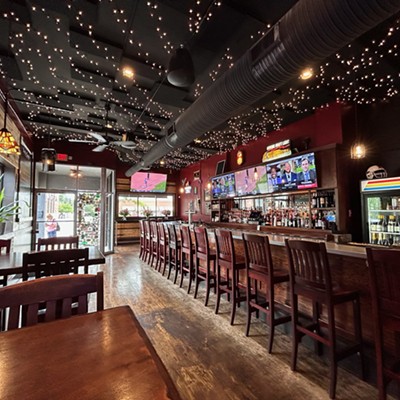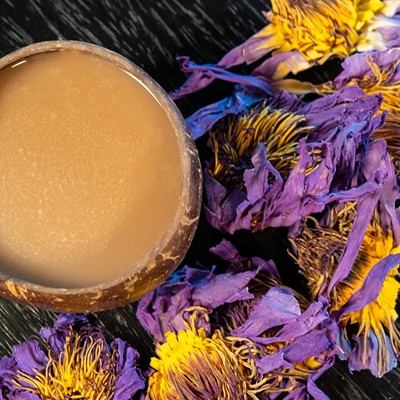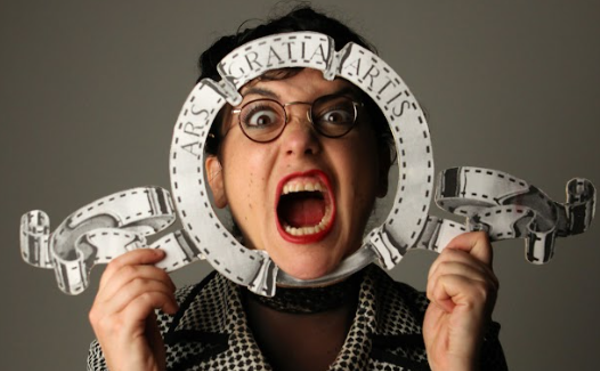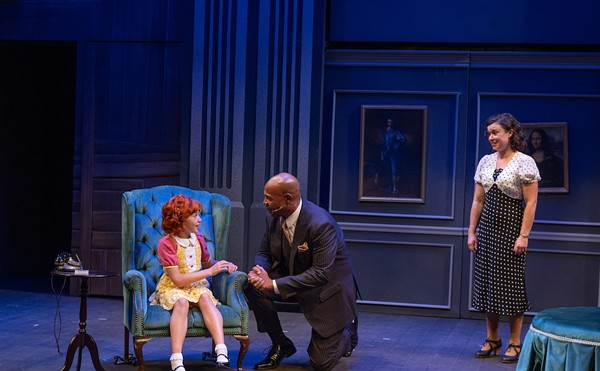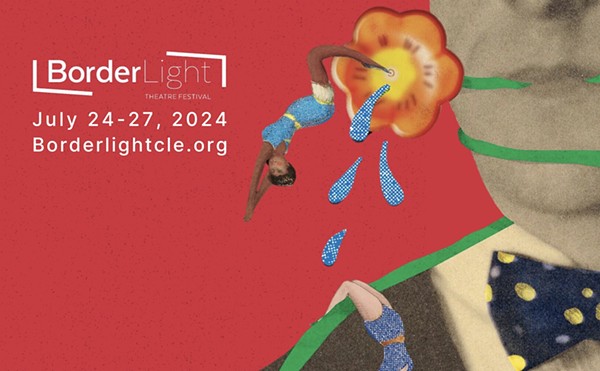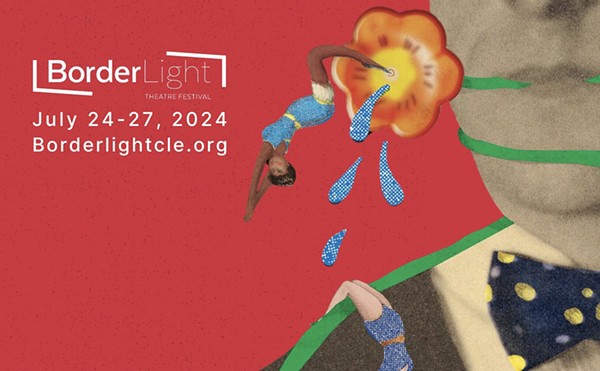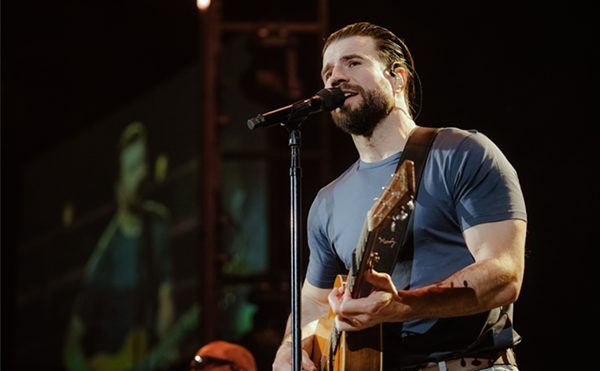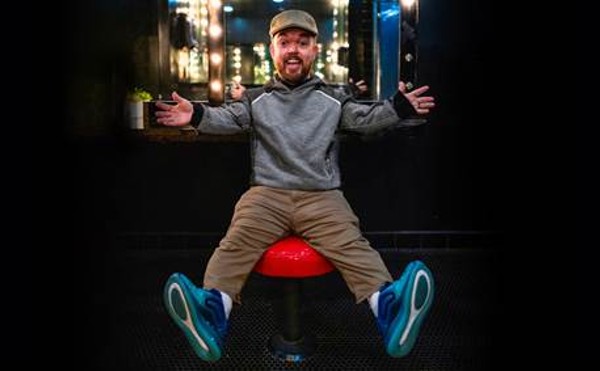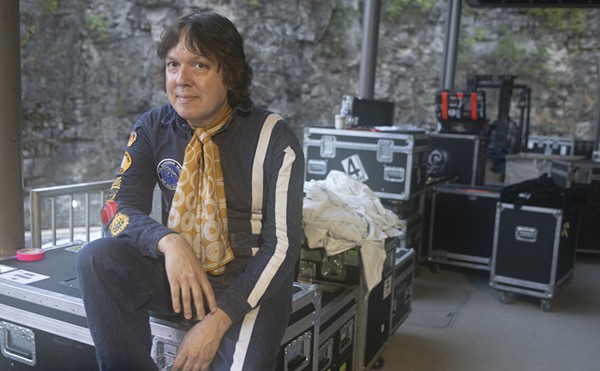Matthew Kolodziej's painting "Paradis" sings with jazzy energy. A series of rectangular panels jut in every direction like billboards crowding out the storefronts of a street corner. Quick brush strokes, in throbbing red triangles or black dashes, underline the boards' commercial energy, the urban imperative to go go go.
However, Kolodziej's "Cathedral" finds its beauty in stillness. It is composed mostly of vertical, dirty-white rectangles and black smears. From the grayish mass a vague, Cubistic outline of an object resembling a church with two steeples emerges. Flecks of blue, green, rust, hot pink and highlighter-yellow flicker in and out like fads.
An assistant professor at the Myers School of Art at the University of Akron, Kolodziej uses his exhibit Ecotone at William Busta Gallery to display work dated from 2012 or this year. Its imagery could be described as abstractions with concrete visual origins, most often from architecture, but always in outdoor spaces modified by humans. Though both mood and visual style shift greatly between pieces, the exhibit is consistently excellent.
"Barrier" retains the closest visual resemblance to its real-world model. White-orange striped traffic barriers span across a space filled half with cloudy gray, and half with a shade of blue unseen in any sky. Kolodziej undermines any illusion of lifelikeness with a ghostly ivory smear on the gray "ground" in front of the barriers. The visible brush-bristles, and the fact it is a two-dimensional blot of color in a space which otherwise appears three-dimensional, ground the fact that this is a painting done for its own sake, to be understood on its own terms, not a stand-in for some another object.
Pieces tilted steeper and further in the direction of abstraction make this insight easier to grasp. There, the original object seen by the artist may not even be visible. "Backdrop" stretches a black sky over a sort of coral reef of paint-blobs, lilac, gold, white-gray, and red in color. At their thickest, the dollops must be half an inch off the canvas. It advances on the viewer like a live nighttime thing, like a swarm of rainbow-hued fireflies, or a hillside of nocturnal flowers moved by wind.
Kolodziej's work is remarkable not for its demonstration of one effect of acrylic paint, but for its demonstration of seemingly all of them. Under his brush, paint can be opaque, laid on in a tick dry paste, or so thin and watery bare canvas or the colors of deeper layers of paint show through. Kolodziej will affix thick, bubbly dollops to his surfaces which, when dry, give an appearance of parched fragility. He will also squeeze lines of paint right onto the canvas like strands of Elmer's glue; these retain the appearance of freshness and moisture, casting off curvy white light reflections like a liquid or gel.
These squeezed-gel effects are used in "Factor," and it is perhaps only here that their texture is not organically worked into the rest of the painting. Vine-like strands of wet green are used to fill in dark spots on huge, sand-colored cubes with sloping triangular roofs like warehouses compressed in two dimensions. With the rest of the painting essentially flat, the squeezed-on vine strands look like ad-ons rather than integrated parts of a whole.
However, as was said, this is the exception. Whether interpreted as abstract configurations or radically expressive representational works, Ecotone's chaotic intricacies display a world of innovations.
Matthew Kolodziej will be in the gallery Saturday May 18 to discuss his work from 2 to 4 p.m. Ecotone will be on display through June 1 at 2731 Prospect Ave. For more information, call 216-298-9071 or go to williambustagallery.com.

